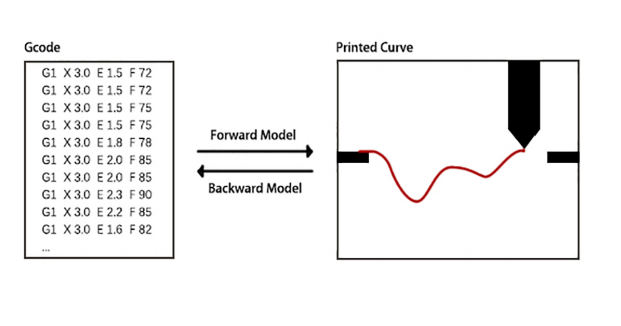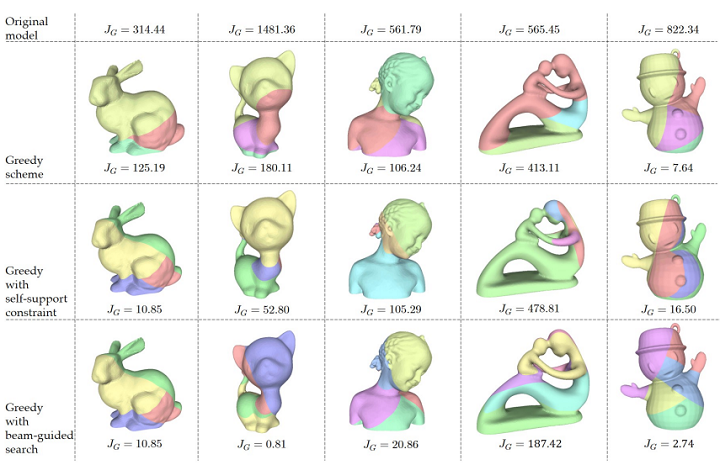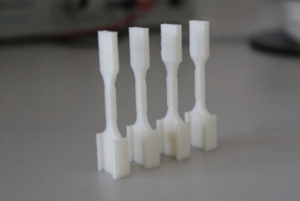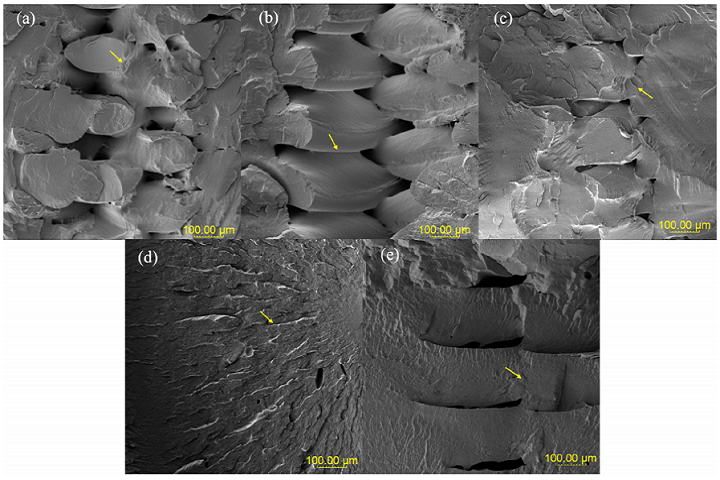Beijing researchers 3D print implants capable of inhibiting HPV infection
Researchers create roadmap for 3D bioprinting
Beijing: Researchers Improving 3D Printing with Artificial Intelligence
Researchers from Tsinghua University are investigating artificial intelligence and all that surrounds it, from materials to workflow, performance, and all the elements of intelligent construction. Their experiments are outlined in the recently published, ‘Re-perceive 3D printing with Artificial Intelligence.’
 Today, artificial intelligence (AI) is becoming even more of a reality, and its uses continue to travel far beyond imagery, speech, and the ability to make choices. Architects are expanding construction methods with AI, and within digital construction, positively disrupting conventional practices—and offering enormous potential. In this study, the researchers explore the possibilities of finding new, universal methods for AI—along with mapping material/distribution properties to material behavior.
Today, artificial intelligence (AI) is becoming even more of a reality, and its uses continue to travel far beyond imagery, speech, and the ability to make choices. Architects are expanding construction methods with AI, and within digital construction, positively disrupting conventional practices—and offering enormous potential. In this study, the researchers explore the possibilities of finding new, universal methods for AI—along with mapping material/distribution properties to material behavior.
Their new system can print a spatial wireframe either in 2.5 or 3D, and without supports. Because of intermolecular forces and more, it is not possible to achieve comprehensive control of the printing process with basic software. The researchers studied automatic systems and image processing in order to create a model calculating the printed code, while the other predicts G-Code.
The main workflow includes:
- Development of an automatic mechanical system
- Training the forward and backward models
- Model and method evaluation
In model training, the researchers included:
- Deep learning
- Data augmentation
- Forward model
- Backward model
The ultimate goal is to propel a new manufacturing process forward, centered around the use of dynamic material properties. They report that their new model has ‘already achieved a positive result,’ with shapes printed accurately; however, there is still a concern as to whether they can predict a G-Code set for curves required for printing. Their new method expands the application of a scientific workflow and creates a direct end-to-end connection—from fabrication to the final form.
“… compared to the traditional method of developing material models that require different fields of knowledge and workflow for different material properties, the method and logic of the work described in this paper is universal and proven to be capable of generalization when applied to producing a diversity of material performance models that encompass multiple systems of non-related material behavior, such as the active process of bending elastomer and the reform process of melting thermoplastics.”
”For architects, architectural design ultimately relies on the selection and construction of materials. In the long run, new building materials and new construction methods will bring about tremendous changes in the construction industry, as well as new architectural styles. We believe that the approach presented in this article will be a positive inspiration to herald this change,” concluded the researchers.
Artificial intelligence is gaining further ground and accompanies 3D printing and other related technologies too as researchers around the world endeavor to seek further imaging recognition capabilities, use it as a measuring device in 3D printing, and even analyze cardiac health.
What do you think of this news? Let us know your thoughts! Join the discussion of this and other 3D printing topics at 3DPrintBoard.com.
[Source / Images: ‘Re-perceive 3D printing with Artificial Intelligence’]
The post Beijing: Researchers Improving 3D Printing with Artificial Intelligence appeared first on 3DPrint.com | The Voice of 3D Printing / Additive Manufacturing.
3D Printing News Sliced: Desktop Metal, Sigma Labs, Open Bionics, Cincinnati Incorporated
Researchers Decrease Support Structures for Models Through Multidirectional 3D Printing

An illustration for the idea of the algorithm: (a) a progressively determined planar clipping results for generating the optimized base planes, and (b) the inverse order of clipping planes results in a sequence of regions to be fabricated where the printing direction of each region is the normal of its base plane. The orientation of a printing head is fixed during the procedure of physical fabrication. The parts under fabrication are reoriented to realize the multidirectional 3D printing.
In most planar-layer based 3D printing systems, material collapse is prevented on large overhangs by adding support structures to the bottom. But support structures in single-material 3D printing methods have some major issues, like material waste and the possibility of surface damage. This can be helped by introducing rotation and turning the hardware into a multidirectional system, where models are subdivided into separate regions and each one is 3D printed along a different direction.
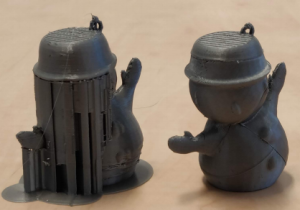
L-R: Snowman models fabricated by an FDM 3D printer and the team’s multidirectional 3D printing system by adding only one rotational axis on the same 3D printer.
A team of researchers from Tsinghua University, TU Delft, and the Chinese University of Hong Kong developed two types of multidirectional 3D printing hardware systems: one modified from an off-the-shelf FDM 3D printer with an added rotational degree-of-freedom (DOF), and the other implemented on an industrial robotic arm to simulate a tilting table for two rotational DOFs. They outlined their work in a paper titled “General Support-Effective Decomposition for Multi-Directional 3D Printing.”
The abstract reads, “We present a method to fabricate general models by multi-directional 3D printing systems, in which different regions of a model are printed along different directions. The core of our method is a support-effective volume decomposition algorithm that targets on minimizing the usage of support-structures for the regions with large overhang. Optimal volume decomposition represented by a sequence of clipping planes is determined by a beam-guided searching algorithm according to manufacturing constraints. Different from existing approaches that need manually assemble 3D printed components into a final model, regions decomposed by our algorithm can be automatically fabricated in a collision-free way on a multi-directional 3D printing system. Our approach is general and can be applied to models with loops and handles. For those models that cannot completely eliminate support for large overhang, an algorithm is developed to generate special supporting structures for multi-directional 3D printing. We developed two different hardware systems to physically verify the effectiveness of our method: a Cartesian-motion based system and an angular-motion based system. A variety of 3D models have been successfully fabricated on these systems.”
The researchers wanted to create a 3D printing system that would be able to “add rotational motion into the material accumulation process” to ensure fewer supports, if any. To do so, they created a general volume decomposition algorithm, which “can be generally applied to models with different shape and topology.”
“Moreover, a support generation algorithm has been developed for multidirectional 3D printing,” the researchers explained. “The techniques developed here can speedup the manufacturing of 3D printed freeform models by saving the time of producing and removing supports.”

Progressive results of fabricating models on 4DOF multidirectional 3D printing system and a 5DOF system realized on a robotic arm.
The research team’s paper made several technical contributions, including their support-effective algorithm, which is based on beam-guided search and can be applied to 3D models with handles and loops. In addition, they also summarized decomposition criteria through their multidirectional 3D printing process and created “a region-projection based method” for generating supports for multidirectional 3D printing.
There are, however, some drawbacks involved when changing from one 3D printing direction to another, such as slowing down the process, which is why the researchers “prefer a solution with less number of components, which can be achieve by considering the following criterion of clipping.”
“After relaxing the hard-constraint of support-free into minimizing the area of risky faces as described in JG, the scheme of generating support is considerately vital while both feasibility and reliability should be guaranteed,” the researchers wrote. “To tackle this problem, we propose a new pattern called projected supports that ensures the fabrication of remained overhanging regions through a collision-free multi-directional 3D printing.”
The team applied their algorithm to several models, and were able to reduce, and even eliminate in some cases, the need for support structures. In addition, their method’s “computational efficiency” was on par with general 3D printing time.
“We present a volume decomposition framework for the support-effective fabrication of general models by multidirectional 3D printing,” the researchers concluded. “A beam-guided search is conducted in our approach to avoid local optimum when computing decomposition. Different from prior work relying on a skeletal tree structure, our approach is general and can handle models with multiple loops and handles. Moreover, a support generation scheme has been developed in our framework to enable the fabrication of all models. Manufacturing constrains such as the number of rotational axes can be incorporated during the orientation sampling process. As a result, our algorithm supports both the 4DOF and the 5DOF systems. A variety of models have been tested on our approach as examples. Hareware setups have been developed to take the physical experiments for verifying the effectiveness of our system.”
Co-authors of the paper are Chenming Wu, Chengkai Dai, Guoxin Fang, Yong-Jin Liu, and Charlie C.L. Wang.
Discuss this research and other 3D printing topics at 3DPrintBoard.com or share your thoughts below.
3D Printing News Sliced: Linde Gases, Techniplas, Autodesk, America Makes
Tsinghua University Investigates if Blends of PLA and PBS are Suitable for FDM 3D Printing
A trio of researchers from Tsinghua University in Beijing recently published a paper, titled “Preparation and Characterization of Poly(butylene succinate)/Polylactide Blends for Fused Deposition Modeling 3D Printing,” about preparing material blends of PLA and PBS with various compositions, then validating if they are suitable for use as filaments for FDM 3D printing.
The abstract reads, “To obtain a new type of biodegradable material with high toughness and strength used for fused deposition modeling (FDM) printing, a series of poly(butylene succinate) (PBS)-based polymer materials was prepared via blending with polylactide (PLA). The rheological, thermal, and mechanical properties as well as FDM printing performances of the blends, such as distortion, cross section, and the interlayer bond strength, were characterized. The results show that with increasing PLA content, the blends possess higher melt viscosity, larger tensile strength, and modulus, which are more suitable for FDM printing. Especially, when the content of PLA is more than 40%, distortion due to residual stress caused by volume shrinkage disappears during the printing process and thus products with good dimensional accuracy and pearl-like gloss are obtained. The results demonstrate that the blend compositions with moderate viscosity, low degree of crystallinity, and high modulus are more suitable for FDM printing. Compared with the low elongation upon breaking of commercially FDM-printed material, the PBS/PLA blend materials exhibit a typical ductile behavior with elongation of 90−300%. Therefore, besides biodegradability, the PBS/PLA blends present excellent mechanical properties and suitability as materials for FDM printing. In addition, our study is expected to provide methods for valuating the suitability of whether a thermoplastic polymer material is suitable for FDM printing or not.”
When it comes to prototyping, FDM is one of the most widely adopted technologies, and plenty of materials research has been conducted for the technology. Researchers have been working hard to develop new polymer materials for FDM 3D printing with both high dimensional accuracy and good mechanical properties. PLA, which theoretically can be degraded into just carbon dioxide and water under natural conditions, is often used, but it’s unfortunately a brittle material, which limits its applications.
PBS, with great thermal stability, has a decently low melting point and excellent ductility, which would make it good for FDM 3D printing. But, there haven’t been a lot of studies published on the use of the material as a 3D printing filament.
“One reason is that its low melt strength makes it difficult to continually form monofilament when extruded, which makes printing fail halfway,” the researchers explained. “Moreover, the distortion caused by the relatively large volume shrinkage during cooling probably happens after crystallization, thus resulting in defective products. Therefore, modification of PBS is quite necessary to solve the drawbacks mentioned above and make the material suitable for FDM printing.”
By blending materials, the advantages of these two components can be combined – that’s why this modification method is used so often for polymer materials. There is little research about the use of PBS blends in FDM 3D printing, so the Tsinghua research team stepped up.
“The rheological, thermal, and mechanical properties of the blends were investigated, and different specimens were printed with these filaments to evaluate their suitability for FDM system,” the researchers wrote. “Interlayer bond strength in the printed products was also measured. Furthermore, we expect to find a relationship between the properties of materials and the performance of FDM printing so as to give a reference for judging whether a thermoplastic polymer material, not limited to polymer blends, is suitable for FDM printing or not.”
The team first dried PBS and PLA pellets at 65°C for 12 hours in a vacuum oven before processing them and extruding the blended pellets into filaments for FDM 3D printing. In addition to a few other shapes, like a rabbit, a cuboid model was printed to show distortion, which can be an obstacle to overcome in FDM.
The shear viscosity of the polymer blend melt was measured, along with the thermal properties, such as glass transition temperatures. The researchers also injection-molded the polymer blend pellets to make dumbbell-shaped and cuboid bars for tensile and impact tests, in addition to performing a thermal analysis on these bars to “investigate the effect of FDM printing process on the crystallization behavior of the PBS/PLA blends.”
“All blends exhibit excellent processing properties and can be extruded as monofilaments with 1.75 mm diameter via a single-screw extruder. With increasing PBS content, the elongation at break and impact strength of the blends arise,” the researchers explained. “However, distortion of the printed bars increases due to larger volume shrinkage resulting from the higher degree of crystallinity in the blends. In addition, the interlayer bond strength improves due to the decreased melt viscosity. When PLA content in the blends is not less than 40 wt %, FDM printing can proceed smoothly with neither observable distortion nor detachment from the platform at room temperature.”
The paper also states that PBS60/PLA40 and PBS40/PLA60, in terms of interlayer bond strength, material toughness, and distortion, are the “optimal blend compositions” for use in FDM 3D printing.
“Therefore, with pearl-like gloss and good mechanical properties as well as dimensional accuracy, the bio-based PBS/PLA blends are new promising materials for producing FDM filaments for applications in many fields, especially for architectural design,” the researchers concluded. “Furthermore, our study is expected to provide methods for evaluating whether a thermoplastic polymer material is suitable for FDM printing or not.”
Co-authors of the paper are Qing Ou-Yang, Baohua Guo, and Jun Xu.
Discuss this research and other 3D printing topics at 3DPrintBoard.com or share your thoughts below.

